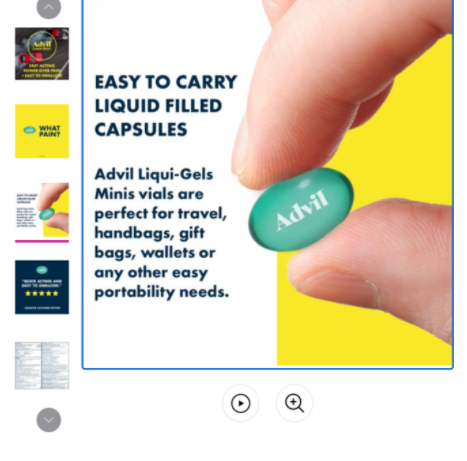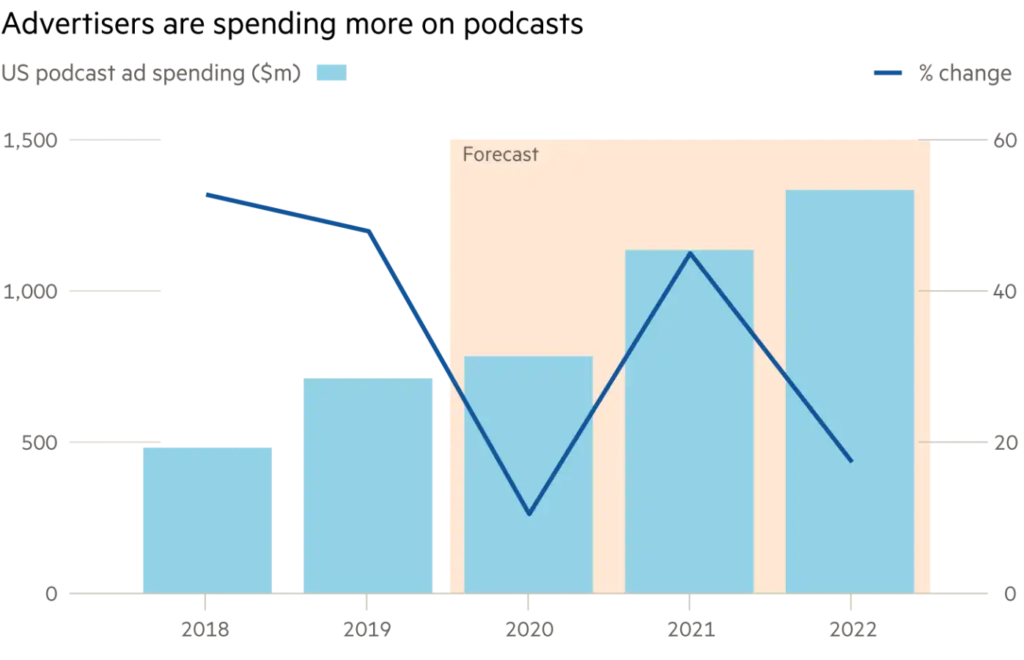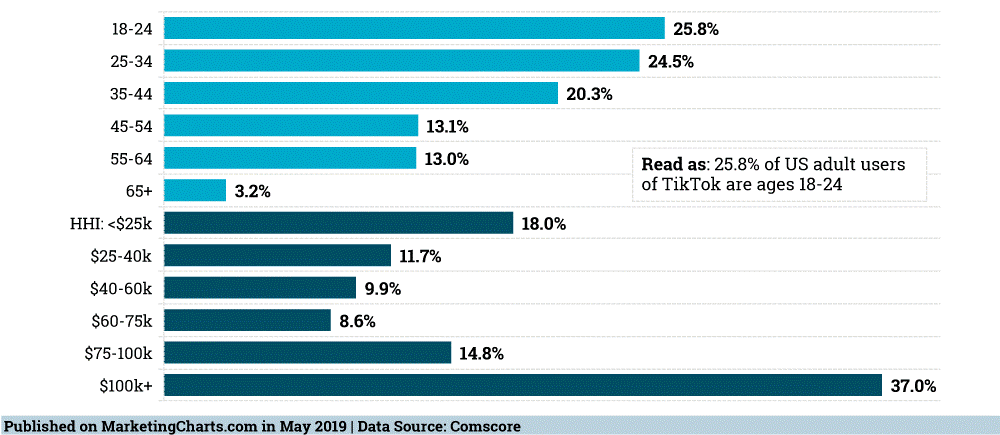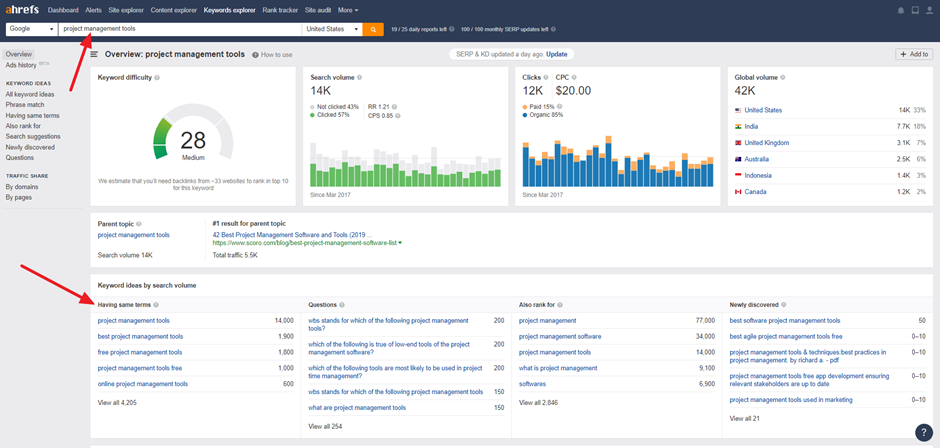Understanding exactly how the Pinterest algorithm works can be somewhat daunting. Hence, while it may feel cool and fun to create and publish beautifully designed pins and see the first clicks to your online platform, understanding the Pinterest algorithm should be your top priority because to understand it is to gain insight and traction on the platform, thereby generating more traffic to your blog or website.
How Pinterest Works
The working principle of Pinterest is simple. Basically, Pinterest users save or “pin” images found on the internet and on Pinterest to different boards that categorize image collections. These images saved on this platform are linked to their original web page, making it easy to find exactly what you are looking for as a user.
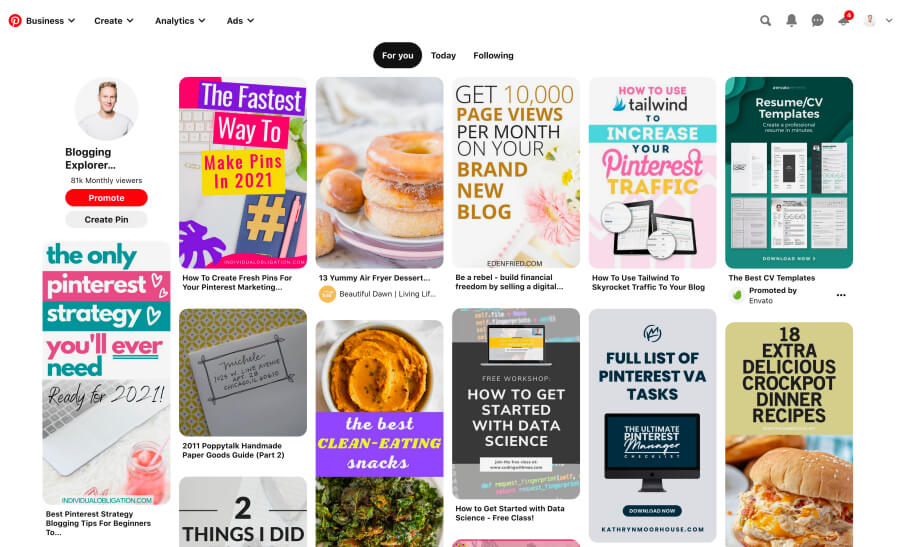
Source: Pinterest
Source: Pinterest
By using Pinterest, you’re able to see a variety of curated content in photo form catered directly to your search results. You can then save and categorize content that you’d like to reference in the future. Also, On instances when a Pinterest user enters a search query the search engine’s Smart Feed ranks and prioritizes pins based on their quality, which the algorithm determines for them. This presents a series of more accurate images, in which users can then click on to access their desired content.
While Pinterest Smart Feed aims to only show relevant content that meets the users’ search results and interests, the following are some unique features of Pinterest:
- Users can then repin articles and images that they would like to save for later.
- Users can also create their own Pinterest board and add relevant pins to their collection.
- Users can interact with each other through liking, commenting and repinning other’s pins and even private messaging.
What is the Pinterest Algorithm?
Often viewed as a social network, Pinterest is a visual search engine. The Pinterest algorithm determines what users will see in their Smart Feed. Because search engines use specific information to rank content, knowledge of basic SEO strategies is an essential part of mastering the Pinterest algorithm.
However, what’s more important for your traffic strategy is how the search engine algorithm determines what pins to show users when search queries are typed on Pinterest.
How does the Pinterest search algorithm work?
To know the exact ranking factors built into the Pinterest algorithm is elusive. Nevertheless, there are a few key points Pinterest has shared with us that we can focus on. The four main factors that influence ranking are:
- Domain quality
- Pin quality
- Pinner quality
- Topic relevance
It is important to note that these factors are not outlined in a particular order of significance.
Domain Quality
Domain quality is how Pinterest determines the quality of your website. By using the algorithm, Pinterest is able to detect the popularity of pins that came from your website. The more popular the pins, the more Pinterest see your website as a source of high-quality content.
To improve websites domain quality ranking, the following simple steps are recommended:
- Convert your Pinterest account to business account. This will allow you to dive deeper into analytics, website visits, and the amount of repins you’re receiving
- Claim your website. This will show Pinterest that you’re a legitimate and engaged pinner, and that the source in which the pins come from is verified.

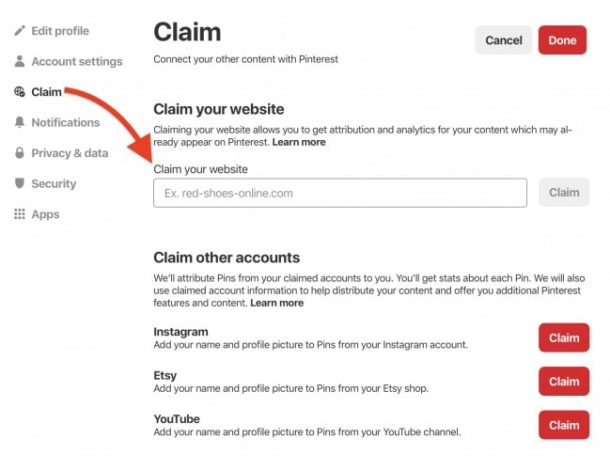
Source: Pinterest
Pinterest has a detailed guide for this you can follow.
- Use rich pins. A rich pin allows information to be transferred straight from your website to the pin. Because rich pins are constantly updating, your Pinterest content will never be outdated
- Pin often on your Pinterest account. Pinning consistently will let Pinterest know you’re an engaged user and hence be rewarded for the time spent on the platform
- Create and pin high-quality content. By pinning high-quality and fresh content that encourages saves and comments, Pinterest will continue to show this content to even more users.
Pin Quality
The quality of your pins is also very important. Pin quality is often determined by the popularity and engagement level of your pins. The more people who engage with your pin by clicking through, saving, zooming, adding a photo or commenting, the higher your pin will rank for quality.
Improve your pin quality by doing the following:
- Make the titles compelling to make a big impression
- Create pin-worthy graphics and images that are informative while also looking beautiful.
Here are six best practices for creating click-worthy, viral pin images:
- Use a high-quality, high-resolution image:
Take your own photos or use free high-res stock photos from Unsplash or Pexels, for instance. - Make sure your pin graphic is tall: Pinterest recommends a 2:3 ratio, width to height.
- Use the right image size: For example 1,000 x 1,500 pixels.
- Use text overlays: Add a benefit-driven title or a teaser on top of your image. Keep it short, use a clear font, and make sure it’s readable on smaller screens.
- Include your logo: Place your logo or your website URL on of every pin you publish.
- Include a giveaway preview: If your article includes a free downloadable giveaway, use a small cover image on your pin. This gives users a quick preview of what’s inside, making your pin more clickable.
- Add a link to your website: Finally, make sure you add a link to your blog. Also, double-check that it’s working and the page loads quickly.
Pinner Quality
Pinterest also ranks fresh content according to pinner quality. The more incredible content you create, the more Pinterest will share your feed with others.
The following can help improve your pinner quality:
- Pin daily and consistently to keep your account active throughout the day.
- Pin popular content will bring more viewers to your profile and introducing them to additional pins of yours.
- Increase sales of your content pinning pins that resonate with your audience.
- Increase engagement and Pinterest traffic by using Pinterest analytics to determine “trending” pins.
Topic (Pin) Relevance
Keywords placed throughout the content are used to determine what the pin is about and when it appears in searches. Much like Google and other search engines, Pinterest determines the keyword relevance.
Here’s how to make your pins more relevant:
- Perform keyword research using the search query on Pinterest itself.
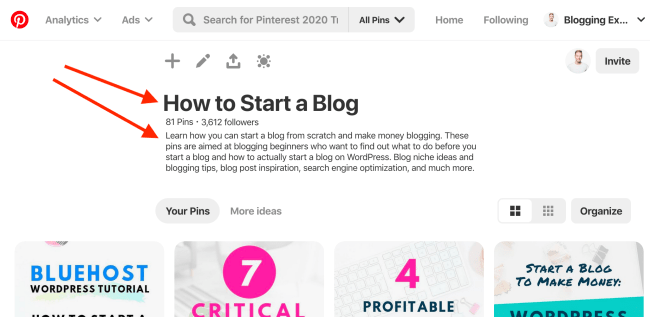
Source: Pinterest
- Optimize your profile by adding keywords right after your username and in your bio to show viewers and Pinterest what you do.
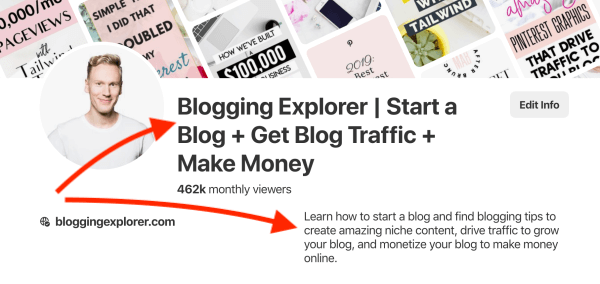
Source: Blogging explorer
- Use intelligent keywords in your Pinterest boards, the board descriptions, and the pins you’re creating.

Source: Blogging explorer
5 Tips to Beat the Pinterest Algorithm
As with many recommendations already given above, here are tips to beat the Pinterest algorithm:
1. Keywords everywhere
Since Pinterest is a search engine, that means people are heading to Pinterest to search for something, to look up an idea, or to find a solution. You’ll need to make sure your boards and pins are SEO optimized. Hence, it’s recommended that you add keywords in the following places:
- Pinterest profile name
- Profile description
- Board names
- Boards descriptions
- Pins
- Pin descriptions
- Blog content
- Blog post keywords.
2. Use Pinterest’s new features
Pinterest adds new features to their platform all of the time. Some new features right now are video pins and carousel pins. Using these Pinterest’s new features helps to beat the Pinterest algorithm and show up first for people when they search for your brand or product.
3. Make your images stand out.
To stand out among the many pinners on Pinterest, you’ll want to use eye-catching images for your pins – they usually have a high click-through rate. Therefore, ensure your images are vertical. Pinterest recommends a 2:3 aspect ratio.
4. Add fresh content often.
The way to show up first on Pinterest is by creating new content. That means a brand new pin with a new image, description, and link for every blog post or product you sell. Pinterest always wants new and fresh content on their platform, so keep that in mind when you’re trying to beat the algorithm.
5. Spend time on the platform
Pinterest wants people to be active on their platform so they can see the content from pinners, interact on the platform, and see Pinterest ads. You can stay active on Pinterest by scrolling, clicking interesting pins, following a few pinners or boards that interest you, and uploading new pins.
Conclusion
Now that you know more about the Pinterest algorithm and how to share your content on the platform the right way, it’s time to get started with building a long-term Pinterest traffic strategy for your blog or website.

